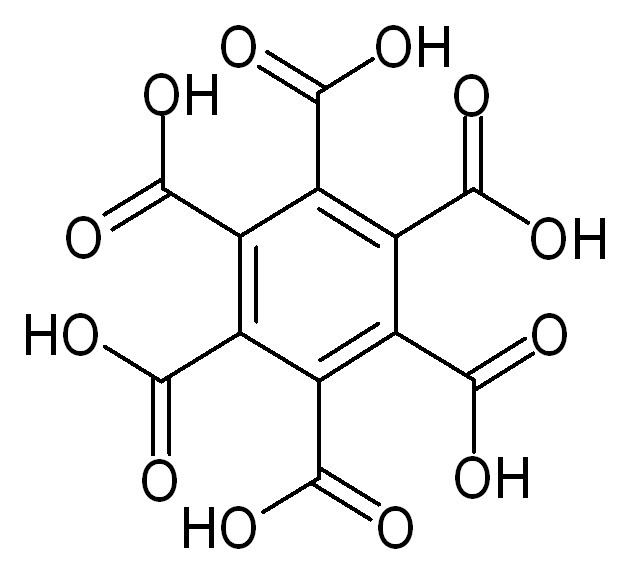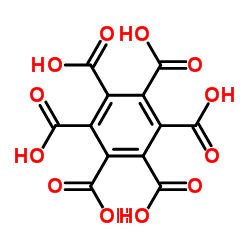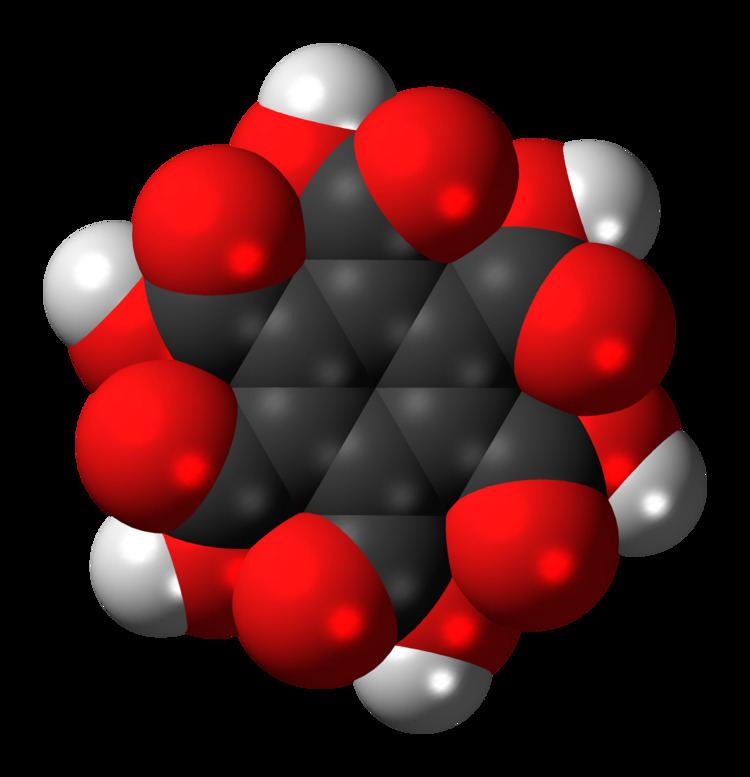Formula C12H6O12 Density 1.68 g/cm³ | Molar mass 342.16 g/mol Boiling point 678 °C | |
 | ||
What does mellitic acid mean
Mellitic acid, also called graphitic acid or benzenehexacarboxylic acid, is an acid first discovered in 1799 by M. H. Klaproth in the mineral mellite (honeystone), which is the aluminium salt of the acid.
Contents

Preparation

Mellitic acid may be prepared by warming mellite with ammonium carbonate, boiling off the excess of the ammonium salt, and adding ammonia to the solution. The precipitated alumina is filtered off, the filtrate evaporated, and the ammonium salt of the acid purified by recrystallization. The ammonium salt is then converted into the lead salt by precipitation with lead acetate, and the lead salt is then decomposed by hydrogen sulfide. The acid may also be prepared by the oxidation of pure carbon, graphite or hexamethyl benzene, by alkaline potassium permanganate in the cold, or by hot concentrated nitric acid.
Reactions

Mellitic acid crystallizes in fine silky needles and is soluble in water and alcohol. It is a very stable compound; chlorine, concentrated nitric acid and hydriodic acid do not react with it. It is decomposed, on dry distillation, into carbon dioxide and pyromellitic acid, C10H6O8; when distilled with lime it gives carbon dioxide and benzene. Long digestion of the acid with an excess of phosphorus pentachloride forms the acid chloride, which crystallizes in needles, and melts at 190 °C. By heating the ammonium salt of the acid to 150–160 °C while ammonia is evolved, a mixture of paramide (mellimide, molecular formula C
6(CONHCO)
3), and ammonium euchroate is obtained. The mixture may be separated by dissolving out the ammonium euchroate with water. Paramide is a white amorphous powder, insoluble in water and alcohol.

The high stability of mellitic acid salts and their presence as an endproduct of the oxidation of polycyclic aromatic hydrocarbons, which are present in the solar system, make them a possible organic substance in Martian soil.
Mellitates (and salts of other benzene polycarboxylic acids) of iron and cobalt have interesting magnetic properties.
